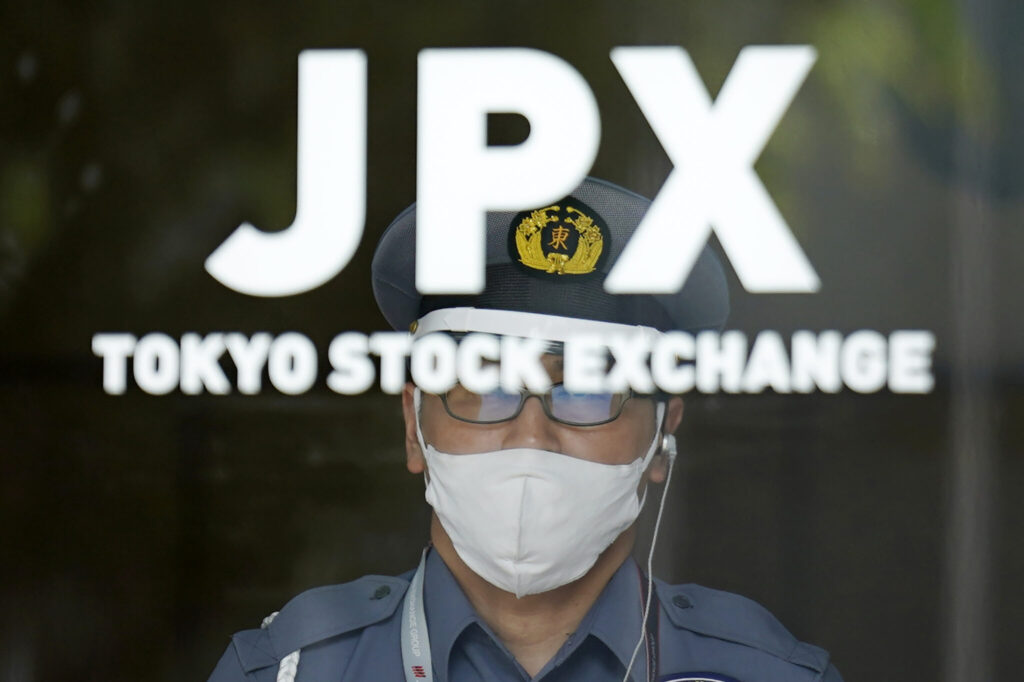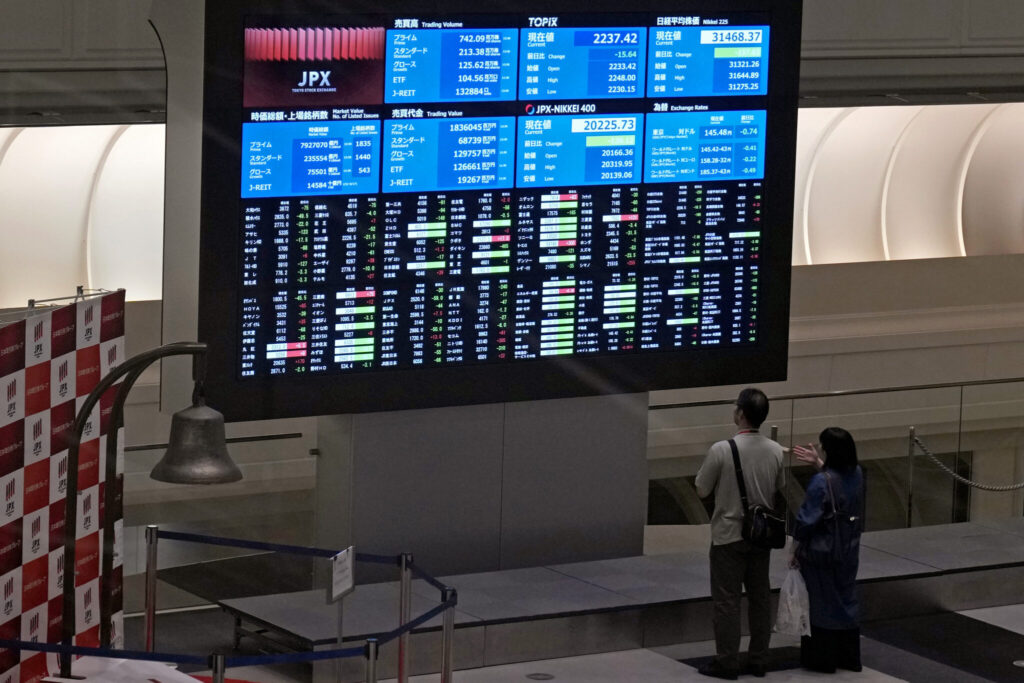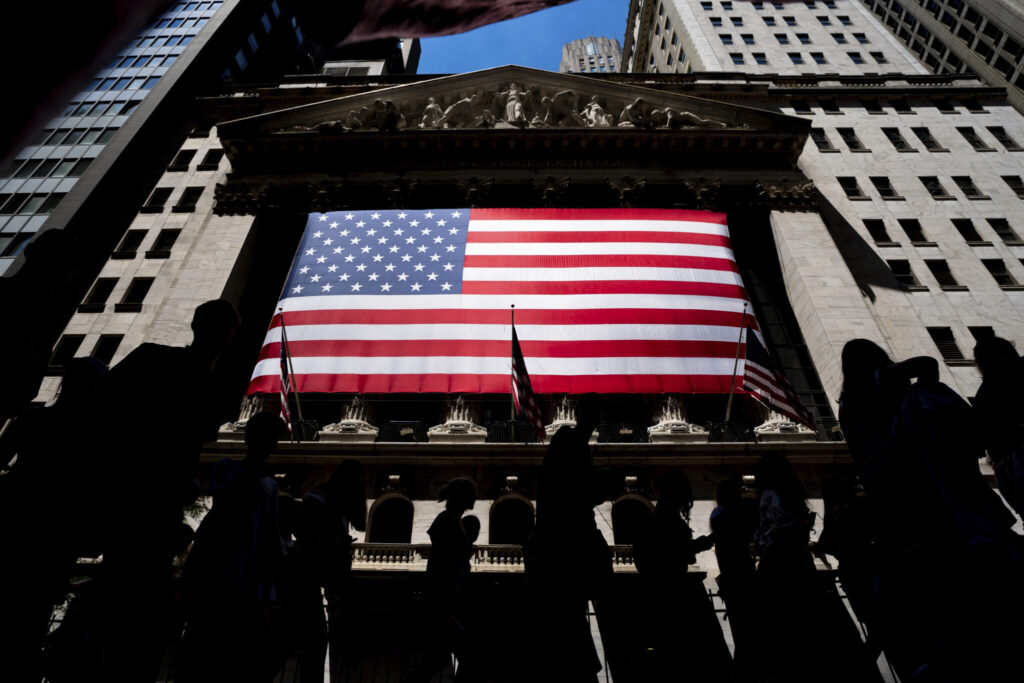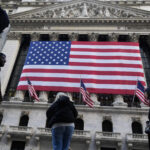Brewing industrial action looks set to test the resilience of the U.S. economy, and especially jobs markets, that have taken policymakers and markets by surprise given the scale of interest rate rises over the past year. The United Auto Workers union launched simultaneous strikes at three factories owned by General Motors, Ford and Chrysler parent Stellantis early on Friday, kicking off the most ambitious U.S. industrial labor action in decades. The Associated Press has the story:
Wall Street slips, but is still on track for weekly gains
Newslooks- NEW YORK (AP)
Stocks slipped in morning trading on Wall Street Friday but not enough to erase the market’s gains for the week.
The S&P 500 fell 0.7%. The benchmark index is on track for weekly gains that would help trim some of last week’s losses. The Dow Jones Industrial Average fell 103 points, or 0.3%, to 34,802 as of 10:49 a.m. Eastern. The Nasdaq fell 1.1%,
Technology stocks were the biggest drag on the market. Microsoft fell 1.5% and chipmaker Nvidia fell 2.2%.
U.S. automaker stocks were proving to be resilient after members of the United Auto Workers union walked off the job at several plants overnight. Ford fell 0.2%, General Motors rose 0.8% and Stellantis gained 1%.
Bond yields gained ground. The yield on the 10-year Treasury rose to 4.32% from 4.29% late Thursday. The yield on the 2-year Treasury rose to 5.03% from 5.02% late Thursday.
U.S. markets were slow to gain traction before the bill Friday with global shares mostly higher on news that China’s slowing economy showed signs of stabilizing.
Futures for the S&P 500 inched up 0.1% while the Dow Jones industrials rose 0.2%.
U.S. markets look to finish with gains after a busy week of economic data hinted at a mostly healthy economy with the Federal Reserve holding its next policy meeting next week.

About 13,000 U.S. auto workers stopped making vehicles and went on strike Friday after union leaders and negotiators for Detroit’s three automakers couldn’t reach a deal before the four-year contracts expired at 11:59 p.m. Thursday.
Members of the United Auto Workers union began picketing at three different Midwest plants, one each for General Motors, Ford and Stellantis.
If the strike lasts a long time, dealers could run short of vehicles and prices could rise, impacting a U.S. economy already under strain from elevated inflation.
Boosting market sentiments this week was a report that said U.S. shoppers spent more at retailers last month than economists expected. That reflects a remarkably resilient job market, which has withstood a steep jump in interest rates.
A separate report Thursday morning said fewer workers applied for unemployment benefits last week than expected, which implies the number of layoffs remains low.
A third report said prices getting paid at the wholesale level rose more last month than economists expected. That could be a discouraging signal for households if the higher-than-expected inflation gets passed on to shoppers at the consumer level.
Investors spent much of the week reviewing mostly healthy updates on the U.S. economy. The reports came ahead of next week’s Federal Reserve meeting, where the central bank is expected to continue holding interest rates steady.
The central bank raised rates aggressively through 2022 and 2023 in an effort to tame inflation, but it maintained interest rate levels at its last meeting. Inflation has generally been easing back to the central bank’s target of 2%.
Consumer sentiment slipped a bit in September, according to a closely-watched survey from the University of Michigan. The latest reading, though, shows that overall sentiment remains strong. It also said consumers lowered their expectations for inflation in the year ahead to 3.1%, which is the lowest reading since March 2021.

To try to get inflation back down to its 2% target, the Federal Reserve has been increasing interest rates sharply since early last year. Most economists think that the Fed will pause on a rate hike at next week’s meeting, but that it likely hasn’t ruled out one more rate increase before the end of 2023.
Boosting market sentiment this week was a report Thursday that said U.S. shoppers spent more at retailers last month than economists expected. A separate report Thursday morning said fewer workers applied for unemployment benefits last week than expected.
A third report on Thursday said prices getting paid at the wholesale level rose more last month than economists expected. That could be a discouraging signal for households if the higher-than-expected inflation gets passed on to shoppers at the consumer level.
Inflation at the consumer level edged higher than expected in August, but high gasoline prices were the biggest driver. Oil prices have been climbing over the summer after Saudi Arabia decided to maintain production cuts. That raised concerns about gasoline prices rising and stoking inflation.
Investors are overwhelmingly betting that the Fed will hold interest rates steady when it closes a two-day meeting on Wednesday. They also expect the central bank could hold rates steady for the rest of the year. The Fed has said it remains willing to continue raising rates if it seems necessary to continue fighting inflation.
In Asian trading, Hong Kong’s Hang Seng surged 0.8% to 18,182.89, while the Shanghai Composite index was shed 0.3% to 3,117.74.
Late Thursday, the People’s Bank of China said it would cut the reserve requirement for banks by 0.25 percentage points as of Friday, “In order to consolidate the foundation for economic recovery and maintain reasonable and sufficient liquidity.”
Further boosting sentiment, the government reported Friday that China’s industrial output rose 4.5% in August from a year earlier, up from 3.7% in July. That is seen as a sign the economy may be breaking out of its post-pandemic malaise.
Japan’s benchmark Nikkei 225 surged 1.1% to finish at 33,533.09. Australia’s S&P/ASX 200 jumped 1.3% to 7,279.00. South Korea’s Kospi added 1.1% to 2,601.28.
Arm Holdings jumped 24.7% in their debut on Nasdaq. The strong welcome could be an encouraging signal for the IPO market, which has slowed since the stock market began tumbling early last year on fears about higher interest rates.

“The Arm IPO optimism and China’s further stimulus measures boosted sentiment across Asian stock markets,” Tina Teng, a markets analyst at CMC Markets APAC & Canada, said in a commentary.
France’s CAC 40 gained 1.6% at midday, Germany’s DAX rose 1% and Britain’s FTSE 100 gained 0.5%.
In energy trading, benchmark U.S. crude rose 25 cents to $90.41 a barrel. Crude has been climbing for months as oil-producing countries try to support its price by curtailing their supplies. Brent crude, the international standard, gained 20 cents to $93.90 a barrel.
In currency trading, the U.S. dollar rose to 147.85 Japanese yen from 147.42 yen. The euro cost $1.0655, up from $1.0645.
On Wall Street, the S&P 500 climbed 0.8% on Thursday for its best day in two weeks while the Dow Jones Industrial Average rallied 1%. The Nasdaq composite added 0.8%.







